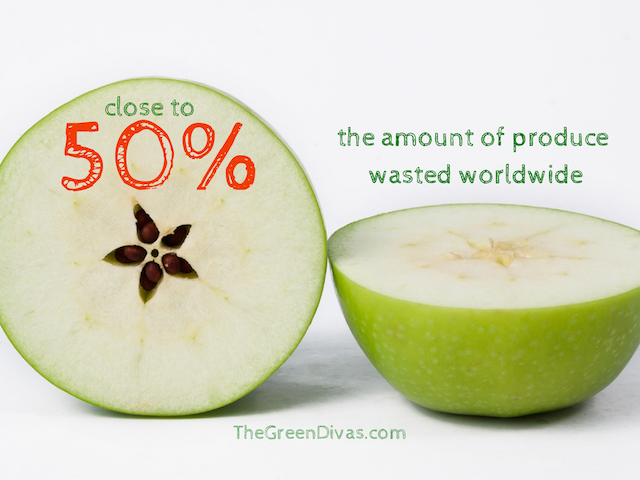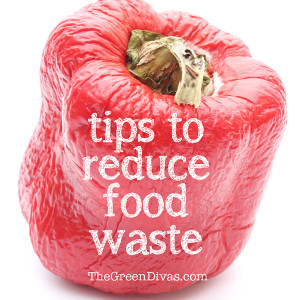
Written by Lindsey Coulter.
You’re eating local, maybe organic, or even growing your own food. Make sure you don’t end up throwing out the fruits and vegetables of your hard-earned labor.
Besides being a waste of money, time and energy, unused food that ends up in landfills is one of the main sources of greenhouse gases.
The food waste stats are staggering:
- Close to half of all food produced worldwide is wasted—discarded in processing, transport, supermarkets and kitchens.
- As much as 30 percent of food, worth about $48 billion, is thrown away in the US each year. (The average household there throws out about 215 kilograms of food each year—around $600 dollars worth.)
- In Toronto, single-family households discard about 275 kilos of food waste each year (although that city’s expanding composting program captures about 75 per cent of that). That means one in four food purchases still ends up in the garbage. (Toronto taxpayers spend nearly $10 million a year getting rid of food waste that’s not composted.)
- Over 30 percent of fruits and vegetables in North America don’t even make it onto store shelves because they’re not pretty enough for picky consumers.
- About 20 percent of Canada’s methane emissions (a greenhouse gas that traps more heat in the atmosphere than carbon dioxide) come from landfills.
- When people toss food, all the resources to grow, ship and produce it get chucked, too, including massive volumes of water. In the US alone, the amount of water loss from food waste is like leaving the tap running and pouring 40 trillion liters of water down the drain.
Most food waste won’t happen if we take the time to plan better and sharpen our food storage skills.
Listen to my Green Divas Foodie-Phile segment for tips on how to reduce food waste.
Fruits and vegetables are still breathing even after they’ve been pulled out of the earth or off the tree or vine. In general, warmth speeds up respiration and cold slows it down—that’s why refrigeration makes some foods last longer.
[dynamic-sidebar id=’Custom Widget 2′]
 Here are five ways to end food waste:
Here are five ways to end food waste:
1. Take produce out of plastic bags. Airtight wrappings suffocate fresh produce and speed up the decay process.
2. Don’t wash produce until you’re ready to eat it. Moisture encourages decomposition and mold growth.
3. Don’t rip off fruit stems. Once living cells are broken, microorganisms start to grow. Keep produce whole as long as possible.
4. Eat the most perishable items first—raspberries last a few days; potatoes can hang around for about a month.
5. Speed up the ripening process by putting the item (a peach, for example) in a paper bag with a banana.
Bonus!
Listen to the full Green Divas Radio Show featuring Climate Mama, Harriet Shugarman in the Green Diva Studio among some of our regular segments— GD Eco-Style on recycled threads; GD What You Can Do on water conservation and Lynn Hasselberger with the myEARTH360 Report…
 Linsday Coulter, David Suzuki’s Queen of Green, answers your green living questions and offers tips and recipes to make your life easier on the environment. It’s all about green living made easy!
Linsday Coulter, David Suzuki’s Queen of Green, answers your green living questions and offers tips and recipes to make your life easier on the environment. It’s all about green living made easy!
Holding strong to the roots of the David Suzuki Foundation brand, Lindsay Coulter communicates the small steps to not only inform, but also empower Canadians to live “green” without guilt or the feeling of being overwhelmed. Her voice, tone, and sense of humor has the ability to lift, persuade and sometime shove people out of “what can I do” mode!
The Queen of Green seeks to build an engaged citizenry that starts with actions they can take at home, then into their neighbourhoods and communities to protect nature and improve our quality of life.
[dynamic-sidebar id=’Custom Widget 1′]
Pingback: Food Rescue Mission Dumpster Diving | Care2 Healthy Living